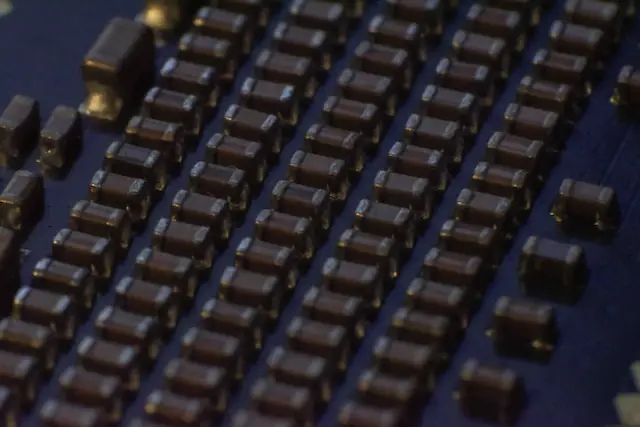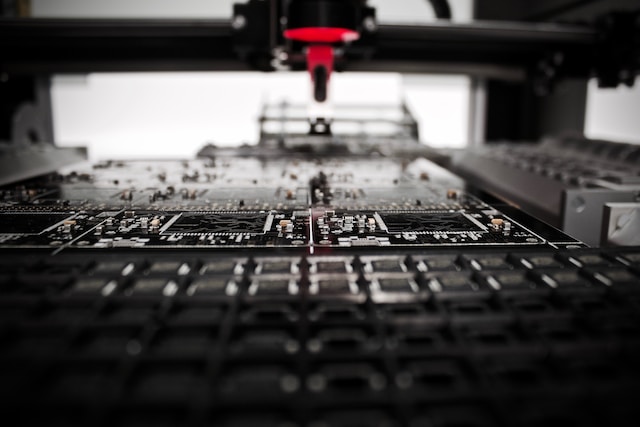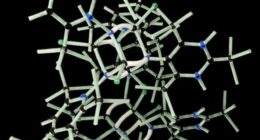Inductance and capacitance are two important electrical properties. They both relate to the ability of a material to store energy in the form of an electromagnetic field. Inductance is the property of a material that allows it to store energy in an inductor. Capacitance is the property of a material that allows it to store energy in a capacitor.
What is inductance?
Inductance is a property of an electrical circuit or device that describes the ability of the circuit to resist changes in current. It is typically denoted by the symbol L and is measured in henries (H).
Inductance arises from the magnetic field that is created when an electric current flows through a conductor. When the current changes, the magnetic field changes as well, and this can induce a voltage in the same conductor or in an adjacent conductor. This effect is known as electromagnetic induction.
Inductors are components that are designed to provide a certain amount of inductance in a circuit. They are typically made of a coil of wire, often wound around a magnetic core, and can be used in a variety of electronic applications, such as filters, oscillators, and power supplies.
The amount of inductance provided by an inductor depends on several factors, including the number of turns in the coil, the size of the coil, and the material of the core. Inductance is also affected by the frequency of the current passing through the circuit, with higher frequencies resulting in lower inductance.
What is capacitance?
Capacitance is a property of an electrical circuit or device that describes the ability of the circuit to store electric charge. It is typically denoted by the symbol C and is measured in farads (F).
Capacitance arises from the presence of an electric field between two conductors that are separated by an insulating material, called a dielectric. The conductors can be two parallel plates, or any two conductive surfaces that are close to each other but not touching.
When a voltage is applied to the conductors, an electric field is created between them, and this field causes electric charge to accumulate on the conductors. The amount of charge that can be stored depends on the capacitance of the circuit.
Capacitors are components that are designed to provide a certain amount of capacitance in a circuit. They are typically made of two parallel plates separated by a dielectric material, and can be used in a variety of electronic applications, such as filters, oscillators, and power supplies.
The amount of capacitance provided by a capacitor depends on several factors, including the area of the plates, the distance between the plates, and the material of the dielectric. Capacitance is also affected by the frequency of the current passing through the circuit, with higher frequencies resulting in lower capacitance.
Inductance Vs. Capacitance – Key differences
Inductance and capacitance are both important properties of electrical circuits, but they have some key differences:
Definition: Inductance is the ability of a circuit to resist changes in current, while capacitance is the ability of a circuit to store electric charge.
Physical components: Inductance is typically provided by inductors, which are coils of wire wound around a magnetic core. Capacitance is typically provided by capacitors, which are two parallel plates separated by a dielectric material.
Measured in different units: Inductance is measured in henries (H), while capacitance is measured in farads (F).
Dependence on frequency: Inductance and capacitance both depend on the frequency of the current passing through the circuit, but in opposite ways. Higher frequencies result in lower inductance, but higher capacitance.
Effects on circuits: Inductance tends to oppose changes in current, which can result in voltage spikes when the current is switched on or off. Capacitance tends to smooth out voltage changes in a circuit.
Role in circuits: Inductance is often used in circuits to filter out high-frequency noise, while capacitance is often used to filter out low-frequency noise.
While inductance and capacitance are different properties of electrical circuits, they both play important roles in the behavior of circuits and are used in a variety of electronic applications.
How to choose the right inductor or capacitor
(Photo by Liam Briese on Unsplash )

When it comes to choosing the right inductor or capacitor for your circuit, there are a few things you need to take into account. The first is the frequency of the signal you are working with. Inductors and capacitors have different impedance values at different frequencies, so you need to make sure you choose one that will work with the frequency range you are working with.
Another important factor is the size of the component. Smaller components can often handle higher frequencies than larger ones, but they also tend to be more expensive. You need to balance these factors when making your decision.
Finally, you need to consider the power rating of the component. This is especially important for capacitors, as they can overheat and fail if they are not properly rated for the amount of power they are handling. Make sure to check the datasheet for each component before making your final decision.
What is the main difference between inductive and capacitive reactance?
The main difference between inductive and capacitive reactance is that inductive reactance occurs when an inductor is used while capacitive reactance occurs when a capacitor is used. Inductive reactance is caused by the magnetic field created by the current flowing through the inductor while capacitive reactance is caused by the electric field created by the voltage across the capacitor.
What is the difference between a capacitive and inductive circuit?
(Photo by Vishnu Mohanan on Unsplash )

There are two types of circuits: capacitive and inductive. Both have their own advantages and disadvantages.
Capacitive circuits are able to store more energy than inductive circuits. However, they are also more likely to discharge suddenly, which can be dangerous. Additionally, capacitive circuits are more expensive to build than inductive circuits.
Inductive circuits, on the other hand, are not as good at storing energy as capacitive circuits. However, they are less likely to discharge suddenly, making them safer. Additionally, inductive circuits are less expensive to build than capacitive circuits.
What is the main difference between capacitor and capacitance?
The capacitor is the main difference between capacitance and inductance. The capacitor is an electrical component that stores energy in the form of an electric field. The capacitance is the ability of a material to store an electric field.
How do you convert capacitance to inductance?
It is not possible to directly convert capacitance to inductance or vice versa because they are fundamentally different electrical properties. However, there are some situations where it may be possible to approximate the effect of a capacitor as an inductor or vice versa.
For example, in some electronic circuits, a capacitor and an inductor can be used together to create a resonant circuit that has a specific frequency response. In this case, the capacitance and inductance values can be chosen to achieve the desired response.
Alternatively, there are some formulas that relate the resonant frequency of a circuit to its capacitance and inductance values. For example, the resonant frequency of a series resonant circuit can be calculated using the formula:
f = 1 / (2 * pi * sqrt(L * C))
where f is the resonant frequency in hertz, L is the inductance in henries, and C is the capacitance in farads.
In this way, it may be possible to estimate the inductance or capacitance value that would be required to achieve a desired resonant frequency in a circuit. However, it is important to note that this is only an approximation and the actual behavior of the circuit may be more complex.
What is capacitor used for?
A capacitor is used to store energy in an electric field. The charge on the plates of the capacitor creates an electric field. This electric field stores energy. The energy is stored in the form of an electrostatic potential difference between the two plates.
What is Inductors used for?
An inductor is a coil of wire that creates a magnetic field when current flows through it. The inductance is the measure of the amount of resistance to changes in current flow. Inductors are used in electronic circuits to block high-frequency signals and allow low-frequency signals to pass. They are also used in electrical filters, chokes, and transformers.
Featured Image By – Louis Reed on Unsplash








